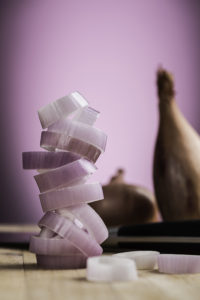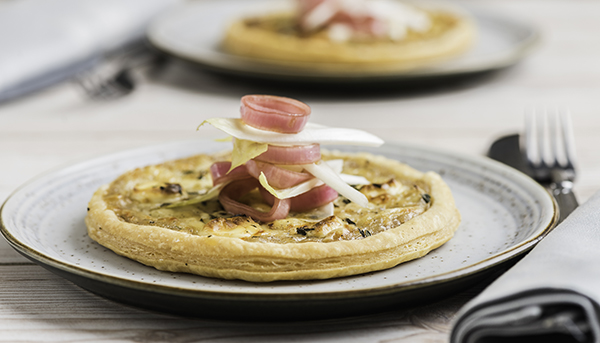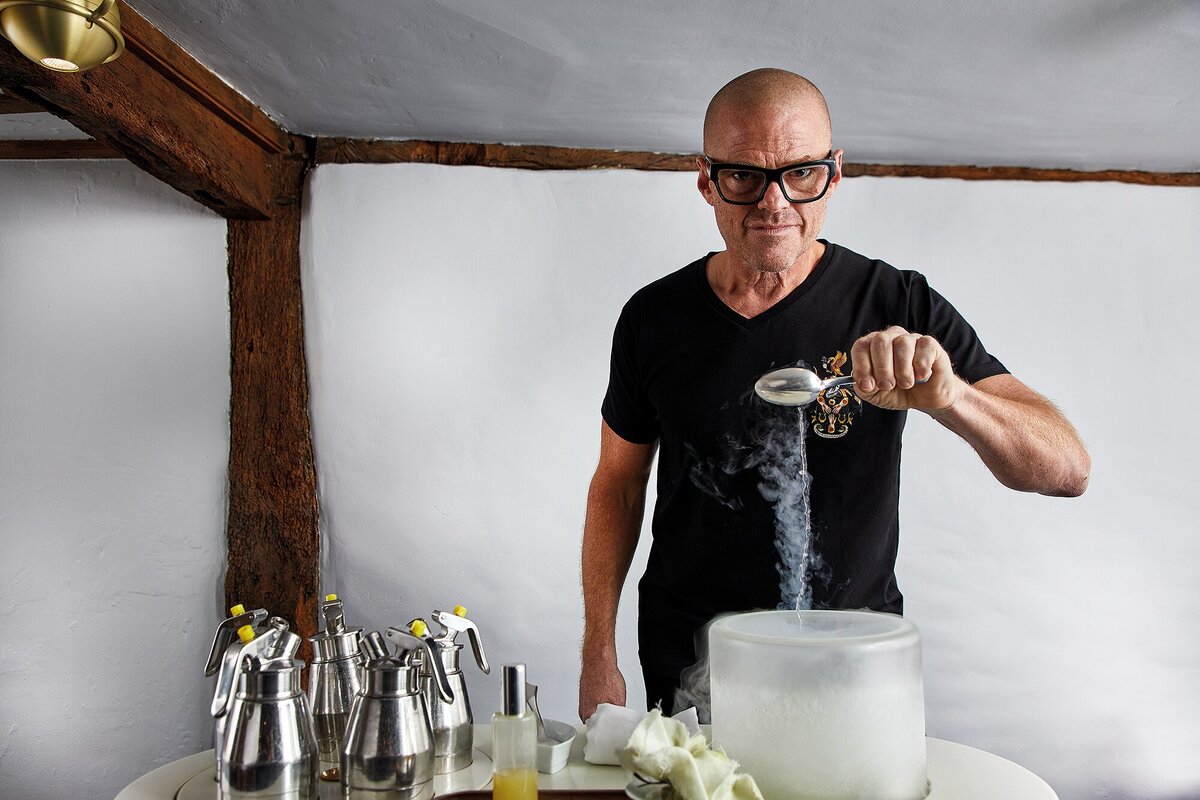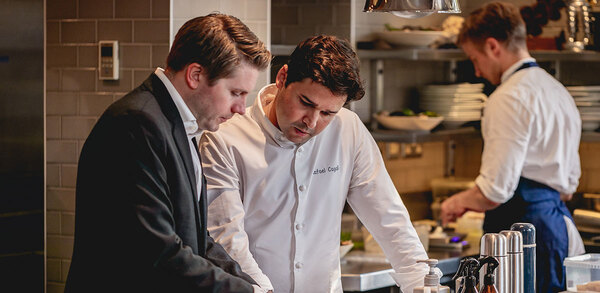Home-grown harvest: Alliums
Probably the most common ingredient of all in professional and home cooking alike, the onion family brings an unbeatable depth and sweetness to savoury dishes, with the shallot's delicacy and versatility being particularly highly prized. Russell Brown reports
Alliums in all their forms are vital in every kitchen. How many recipes begin with chopping an onion or its cousin, the shallot? All the alliums bring a savoury note to dishes as well as an inherent sweetness. It is the natural sugars in onions and shallots that allow them to cook into a rich, golden, sticky mass.
The shallot does differ significantly from the onion, whether it is the classic round shallot or the banana shallot. The layers in a shallot are thinner, and so a finer dice is more easily achieved. Also, the flavour of a shallot when raw is sweeter and not as harsh as that of an onion, while the shallot's smaller size makes it particularly suitable for using whole.
Round shallots grow like garlic, in bulbs containing a number of cloves, while banana shallots are, like onions, a single bulb. Shallots are considered to have a slight taste of garlic to them, and given how often onions and garlic are combined in a recipe it is no wonder they are popular with chefs for many dishes.
L'échalote grise is considered by many to be the king of shallots. It has a much tougher skin than UK varieties, making it harder to peel, but the flavour is said to be worth the effort.
The appearance of shallots varies from country to country, depending on the variety grown. Skins can be red, yellow, grey or white.
Shallot growing in the UK is concentrated mainly in Cambridgeshire, Lincolnshire and Bedfordshire, where the light, sandy soil is particularly suitable. The process starts with the sowing of seed in early spring and the bulbs are ready to be harvested around August and September.

‘New season' shallots typically reach the markets in early October. Modern storage facilities mean that UK-grown shallots are available nearly all year.
Chef-proprietor Mark Hartstone from La Fosse in the village of Cranborne in Dorset likes roasting banana shallots whole and squeezing out the soft flesh, or using round shallots roasted with pancetta lardons. The menu at Corriganâs Mayfair features Cornish crab with Parmesan custard, pickled shallots and avocado. The menu at the recent royal wedding included a canapé of croquet of confit Windsor lamb, roasted vegetables and shallot jam created by royal chef Mark Flanagan.
Buying and storage tips ⢠Bulbs should be firm to the touch with clean-looking skin.
⢠They should be stored in a cool, dry place.
⢠Shallots that have started to show green sprouts should be discarded.
⢠Do not keep in plastic bags, as good air circulation is needed.
Market report
English shallots are seasonal. The round shallot season starts around the end of July and finishes in February, and the banana shallot season is August until February. They usually come packed in 4.5kg bags.
Prices are typically around £1.30/£1.60 per kilo for round shallots and £1.80/£2 per kilo for banana shallots.
Ashley Clemence www.totalproducelocal.co.uk
Roasted shallot and Gruyère tart with pickled shallot and chicory salad
Serves 4 as a starter
For the pickled shallots (makes enough for 18-20 portions) 3 large banana shallots, peeled, sliced into discs 3-4 mm thick, and then separated into rings
125ml red wine
125ml red wine vinegar
125g caster sugar
5g salt
5g yellow mustard seeds
5g whole black peppercorns
For the shallot purée 10 medium banana shallots
12 sprigs of thyme
Olive oil
Maldon sea salt and freshly ground black pepper
Lemon juice
20g mascarpone
For the tarts 4 rough puff discs, 15cm diameter and around 4mm thick, chilled
Shallot purée
70g Gruyère, grated
20g mascarpone
Freshly ground black pepper
1tsp thyme leaves
For the salad 4-6 chicory leaves
20 pickled shallot rings
For the pickled shallots, combine all the pickling ingredients and bring to a simmer. Add the shallot rings and bring back to the simmer. Immediately remove from the heat and allow to cool. Store in the fridge.
Place the shallots in a roasting tin, scatter over the thyme and drizzle with olive oil. Sprinkle on a little sea salt. Roast at 160°C for around 40 minutes until the shallots have collapsed and are completely tender. Allow to cool for 10 minutes and then squeeze the shallot flesh from the skins. Add any juices from the tin and roughly chop to a coarse purée. Season to taste with salt, pepper and lemon, and stir in half the mascarpone.
Place the pastry discs on squares of non-stick baking parchment a little bigger than the pastry. Use a cutter or small knife to mark a border one centimetre in from the edges of the pastry discs. Prick the centres all over with a fork and then spread on a thick layer of roasted shallot purée. Divide the grated Gruyère between the tarts and add small blobs of the mascarpone. Season with black pepper and scatter over a few thyme leaves. Bake at 180°C for 20 to 25 minutes.
Top each tart with a small salad of chicory and pickled shallot rings.
Pappardelle pasta with chestnut mushrooms and shallot cream
Serves 4 as a main course
For the shallot cream 12 round shallots, thinly sliced
50ml olive oil
1 bay leaf
50ml double cream
Maldon sea salt and freshly ground black pepper
For the mushrooms 300g small chestnut mushrooms, halved
30ml olive oil
20g unsalted butter
2 cloves garlic, sliced
Maldon sea salt and freshly ground black pepper
1tbs flat-leaf parsley, roughly chopped
For the pasta 400-500g fresh pappardelle pasta
To serve Best-quality extra virgin olive oil
Parmesan shavings
Sweat the shallots very gently in the olive oil with the bay leaf and a pinch of salt. Cover with a lid and cook until the shallots are completely tender. Add the cream and cook for one minute. Remove the bay leaf and blitz with a hand blender. Season to taste, and thin with a little vegetable stock to give a thick double-cream consistency.
Sauté the mushrooms in the olive oil over a high heat until they begin to caramelise. Add the butter and garlic, and cook for another couple of minutes, taking care that the garlic does not burn. Season to taste and finish with the flat-leaf parsley.
Cook the pasta in a large pot of boiling salted water until al dente. Warm the shallot cream in a sauté pan and add the pasta, keeping it fairly wet and retaining some of the cooking water. Adjust the seasoning and add a little more water if necessary so the shallot cream lightly coats the pasta. Toss in the chestnut mushrooms and divide between shallow bowls.
Finish with a generous amount of good olive oil and shaved Parmesan.
Coming up
Over the next few months I will be featuring winter squash in Home-grown Harvest. Do let me know how you use it on your menus and what your seasonal favourites are. Email recipes, dish suggestions and photographs to



















